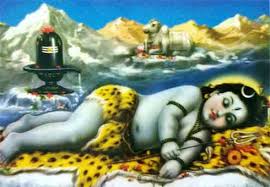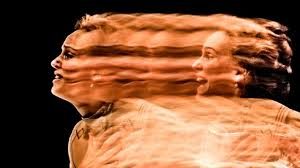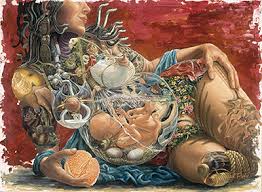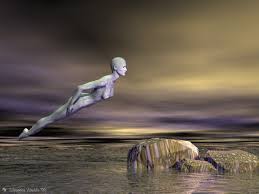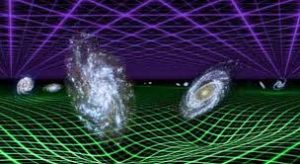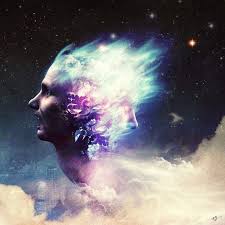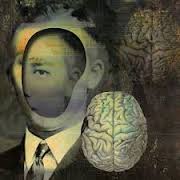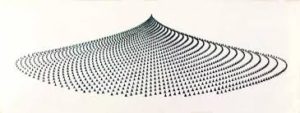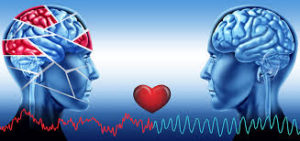Certain chemical changes must come about in the physical organism before projection can occur. Were it not for these, we would still be imprisoned within the corporal image. We know that dreaming has a definite chemical basis, that chemicals built up during periods of waking experience are released through dreams. Not only are these released, but they form a propelling action that allows energy to flow in the opposite direction. As chemical reactions allow the body to utilize energy and form physical materializations, so the excess built up becomes, then, a propelling force, allowing action to flow in what we would call subjective directions.
This same chemical reaction must also occur, only more strongly, before a legitimate projection can occur. This is one of the main reasons why deliberate projections are not more numerous. Usually the chemical access is used in normal dreaming. In periods of exuberant energy and well being, a more than normal excess accumulates. this can trigger a projection. In periods of momentary indisposition, however, the dreaming process may be blocked and the chemical excess accumulated. Again, a good time to try projection.
These chemical excesses are a natural byproduct of consciousness that is bound up in physical materialization. The more intense the characteristic experience of reality, the greater the chemical excess that is built up. consciousness itself, when physically oriented, burns up the chemicals. The more intense the individual, the hotter the fire, so to speak, and the greater the chemical excesses released.
Released they must be, or the organism would not survive. Periods of intense activity may also generate this additional chemical propellant. Although this is generated through activity, it is released, making projections possible, in alternating periods of quietude and rest. There must be a disciplined focus, therefore, of this propellant. Periods of heightened sexual activity of a strong and deep nature will help. Periods of no sexual activity will also help,however. On the one hand, the chemical excess is built up as a result of great intensity, and in the latter case it is built up because psychic and sexual release has not been granted.
Eggs and asparagus are helpful as far as diet is concerned. I am obviously not suggesting a whole diet of eggs and asparagus. These plus fish oils are beneficial, however, but not when taken with acid foods.
I still suggest a more thorough examination of your dreams for many of them contain spontaneous projections. They are most apt to occur in the early hours, between 3:00 and 5:00 A.M. The body temperature drops at such times. Five in the afternoon is also beneficial from this standpoint. The drinking of pure water also facilitates projection, although for obvious reasons, the bladder should be empty. The north-south position is extremely important, and indeed, is a necessity for any efficient dream recall. Energy is most easily utilized in this position for one thing, and this cuts unnecessary restrictions to a minimum.
There is a vast difference between ordinary dreams and projections, whether or not the projections occurs from the dream threshold. Dreams are constructed and sent upon their way. As we know, they maintain an independence within their own dimension.
Projections involve many more aspects of the whole self and are a mark that the personality is progressing in important ways. The inner senses are allowed their greatest freedom in projection states, and the self retains experience that it would not otherwise. When this knowledge becomes apart of the ordinary waking consciousness, then we have taken a gigantic step forward.
An almost automatic determination must be established, however, if conscious projections are to be anything but rare oddities. With me, the problem is somewhat different than it might be with some others. These chemical excesses are used up, for one thing, in my own creative work. I do this automatically. It goes without saying that our own work will gain immeasurably through the extended experience of projection. Yoga exercises allow us to draw an abundance — indeed, a super-abundance — of energy. This energy results, also, in chemical excesses that can be utilized in projections, without drawing energy away from our other work.
The expectation and knowledge that we are a part of all energy will allow us to realize that all the energy we require will be given. Our attitude toward what is possible determines what is possible for us in very definite terms.
Now, there are also electromagnetic changes during projections that can be perceived with instruments. Certain electrical fields will make themselves known under these conditions. The fields have always existed, but they will become apparent to physical instruments only when they are being crossed — in other words, at the very act of projection.
Other hints: A cool body temperature but with room temperature between 73.8 and 75.9. High humidity is poor. The color of a room is important. Cool colors are best. Too warm colors are detrimental, being too closely allied with earthly conditions. In our climate, October, February and March are best. August can be beneficial, according to the weather. Too warm weather is detrimental.
Projections actually involve a change of atomic structure. Consciousness simply changes its form. When projection is first accomplished, there is a strong charge of adrenaline in the body and high activity of the thyroid gland. There is a charge of sexual hormones which are also utilized in projection.
After projection is accomplished, however, there is a marked decline in chemical activity and hormone action, a drop in body temperature and a drop in blood pressure. The rapid eye movements noted by dream investigators cease entirely. The eye muscles are not used. The normal muscular activity that usually occurs in sleep vanishes. The physical body is in a deep trance state. The trance may be masked by sleep, if the projection happens from a dream threshold.
According to the intensity of the projection and to the systems visited, the body may become more or less rigid when consciousness returns to it. This is simply a reaction to the returning consciousness. There is a subtle difference in the way sugar molecules are utilized. Momentarily, the body uses less sugar. However, the sugar is important in fueling the consciousness on its journey. It also aids in connecting the consciousness to the body.
In other words, there is indeed a connection that is and must be partially physical, between the body and the traveling consciousness, and it is based upon a certain sugar molecule in a form not normally seen. Before conscious projections I would therefore recommend that you take a small amount of starchy or sugar food. A small snack before bed is a good idea from this viewpoint. Alcohol is of some benefit, though not to any great degree. Excellent result can be achieved in a dream-based projection during the day in a nap.













